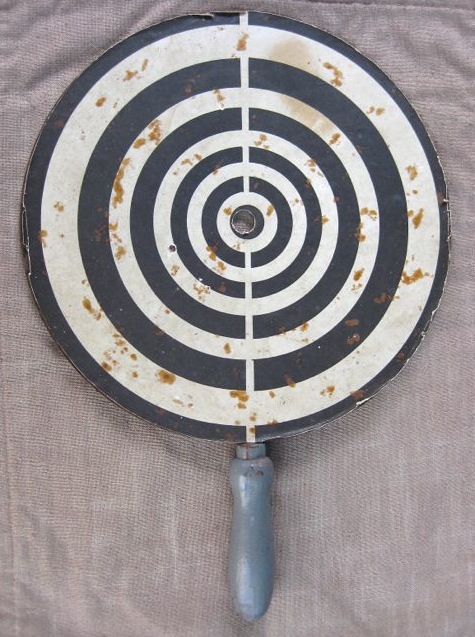Placido Disc
Catalogue Number: 2177 Placido Disc Category: Equipment Sub-Category: Equipment, other clinical Year Of Publication/Manufacture: 1950s Time Period: 1940 to 1999 Description Of Item: Placido disc for examining the regularity of curvature of the anterior surface of the cornea. Metal disc, 24 cm diameter, with grey handle. Paper pasted on one side with concentric black and white rings of progressively increasing width from the inner ring to the outer one. 13 mm hole in the centre has a high plus lens affixed to the back with sticky tape. Historical Significance: The placido disc is used to assess corneal regularity. It was devised by Portuguese ophthalmologist Antonio Placido in 1880 and was used in ophthalmic practice until the advent of corneal topographers in the 1990s. Keratometers only measure cornea at the apex of the cornea and provide no or little information about surface irregularity of other parts of the cornea. This placido disc is probably home made by the donor and has a noteworthy feature of increasing ring width and spacing from inside to out. This is designed to give uniform width and spacing of the rings reflected from the cornea. How Acquired: Donated by John Strachan, member of the College Date Acquired: Feb. 2013 Condition: Fair. Lens fixed by tape. Paper mottled. Location: Archive room. West wall. Unit 6 Drawer 4 |


